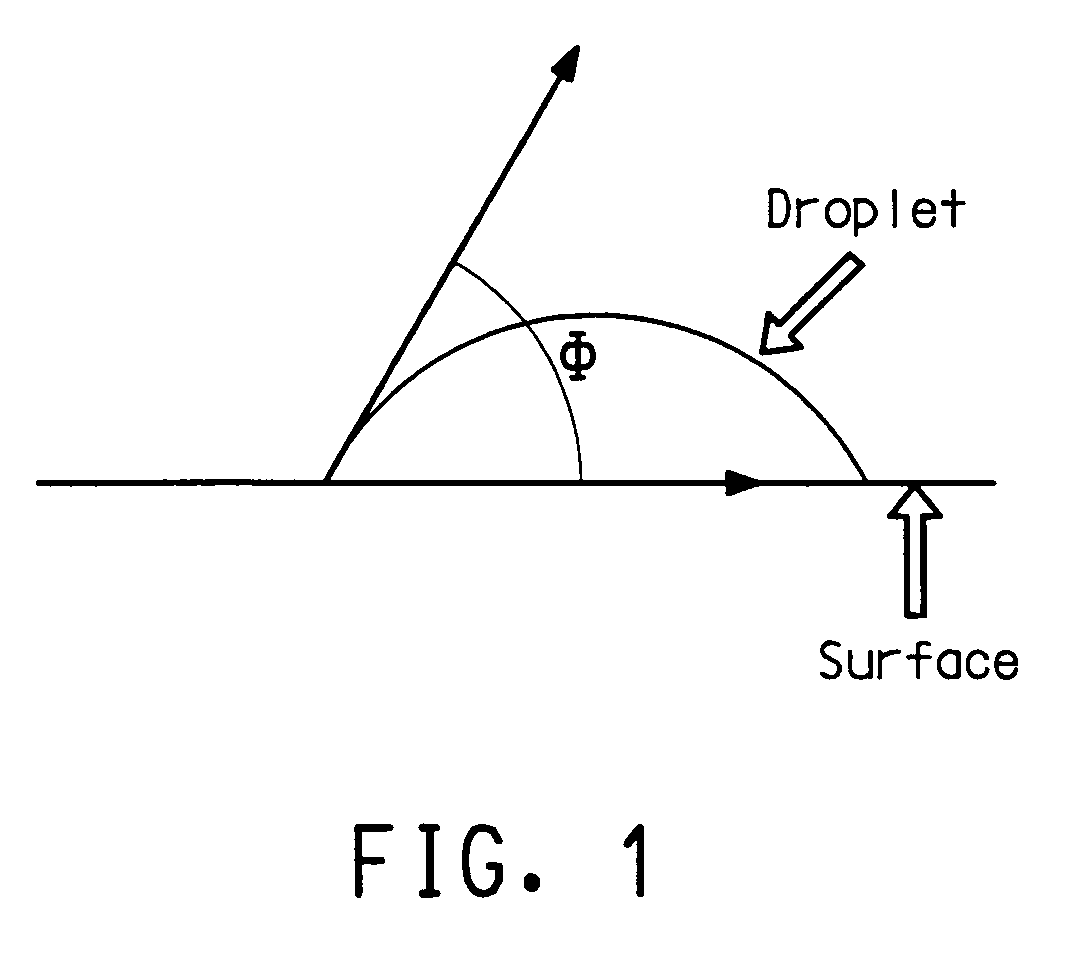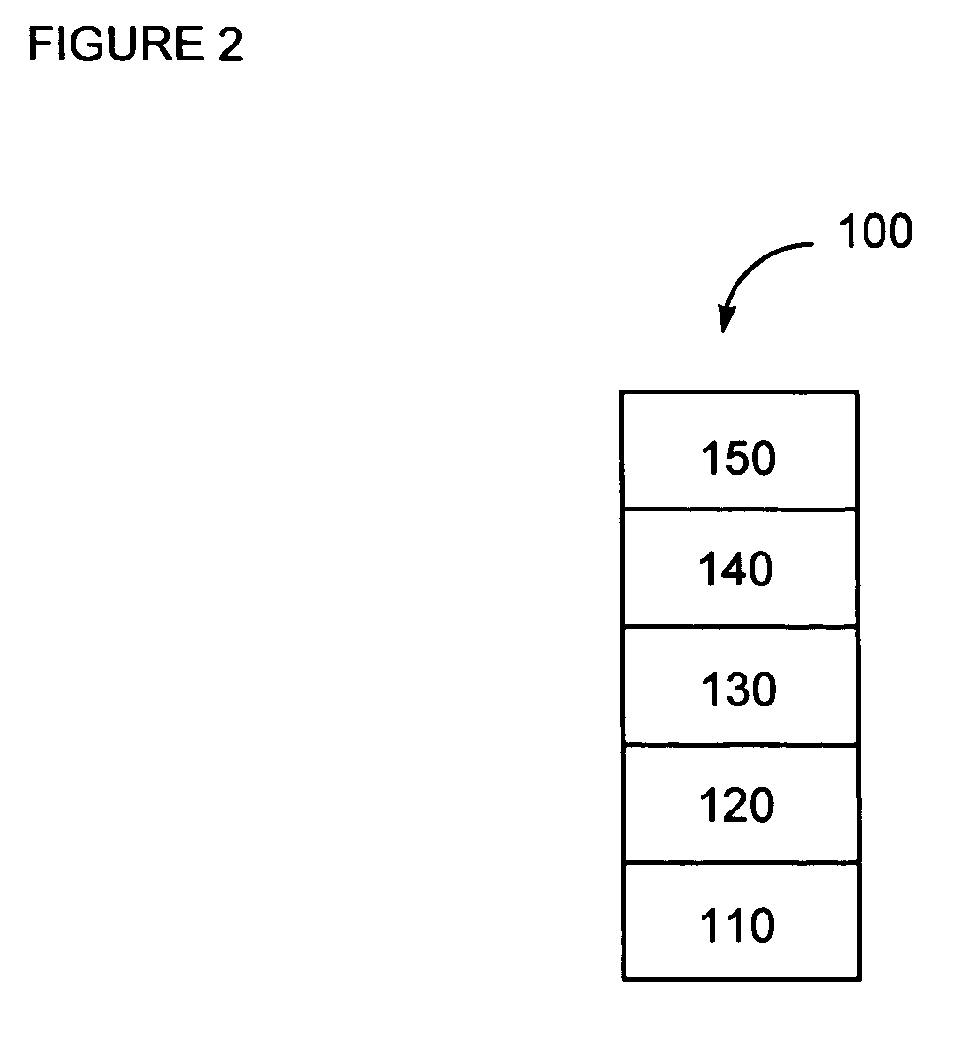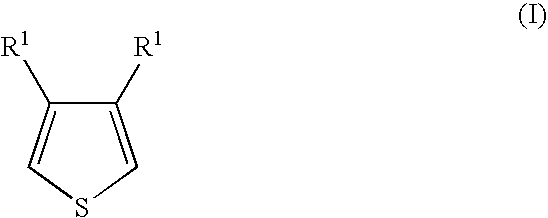High work function transparent conductors
a conductor and high work function technology, applied in the field of transparent conductors, can solve the problems of low work function, less effective injection of holes into el materials, and reduced device li
- Summary
- Abstract
- Description
- Claims
- Application Information
AI Technical Summary
Benefits of technology
Problems solved by technology
Method used
Image
Examples
example 1
[0233]This example illustrates preparation of an aqueous carbon nanotube (“CNT”) dispersion, and work function of the film spin-coated from the dispersion:
[0234]In this example, dispersing CNT in water was accomplished using Triton-X-100 as a dispersing agent. Triton X-100 is a trade mark for octylphenoxy polyethoxy ethanol. It is a non-ionic surfactant and has no influence in affecting Wf of CNT. A stock solution was made by dissolving 1.035 g Triton X-100 in 98.9922 g deionized water, which amounts to 1.05% (w / w) in water. CNT used in this example is L0200 single wall CNT (Laser / raw grade) purchased from CNI at Houston, Tex., USA. 0.0709 g CNT were placed in a small glass jug to which 8.5802 g of the Triton X-100 solution and 25.5112 g de-ionized water were added. The mixture was subjected to sonication for 15 minutes continuously using a Branson Sonifier Model 450 having power set at #3. The glass jug was immersed in ice water contained in a tray to remove heat produced from inte...
example 2
[0236]This example illustrates preparation of an aqueous dispersion of CNT with Nafion® having enhanced Wf of CNT. Nafion® is a trade name for poly(perfluoroethylene sulfonic acid) from E. I. du Pont de Nemours and Company, Wilmington, Del.:
[0237]L0200 single wall CNT (Laser / raw grade) in Example 1 was used in this Example. Nafion® used for dispersing CNT is DE1020. A stock dispersion of the Nafion® was prepared first by mixing 19.7753 g DE1020 with 162.119 g deionized water and 18.0151 g n-propanol. The resulting dispersion contained 1.13% Nafion® polymer. 32.5063 g of the dispersion were mixed with 0.0688 g CNT in a glass jug. The mixture was then subjected to sonication for 15 minutes continuously using a Branson Sonifier Model 450 having power set at #3. The glass jug was immersed in ice water contained in a tray to remove heat produced from intense cavitation. The CNT formed a smooth, stable dispersion without any sign of sedimentation for many weeks.
[0238]The dispersion was sp...
example 3
[0239]This example illustrates preparation of an aqueous dispersion of CNT with Nafion® and conductivity of CNT / Nafion® film
[0240]CNT used in this example is HIPco CE608, also purchased from CNI (Carbon Nanotechnologies, Inc.) at Houston, Tex., USA. CE608 contains 3-4% residual catalyst. Nafion® used for dispersing CNT is DE1021. A stock dispersion of the Nafion® was prepared first by mixing 6.0263 g DE1021 with 151.097 g deionized water and 16.797 g n-propanol. The resulting dispersion contained 0.39% Nafion® polymer. 34.9968 g of the dispersion were mixed with 0.0707 g CNT in a glass jug. The mixture was then subjected to sonication for 15 minutes continuously using a Branson Sonifier Model 450 having power set at #3. The glass jug was immersed in ice water contained in a tray to remove heat produced from intense cavitation. The CNT formed a smooth, stable dispersion without any sign of sedimentation for many weeks.
[0241]A couple of drops of the dispersion were placed on a microsc...
PUM
| Property | Measurement | Unit |
|---|---|---|
| work function | aaaaa | aaaaa |
| work function | aaaaa | aaaaa |
| conductivity | aaaaa | aaaaa |
Abstract
Description
Claims
Application Information
 Login to View More
Login to View More - R&D
- Intellectual Property
- Life Sciences
- Materials
- Tech Scout
- Unparalleled Data Quality
- Higher Quality Content
- 60% Fewer Hallucinations
Browse by: Latest US Patents, China's latest patents, Technical Efficacy Thesaurus, Application Domain, Technology Topic, Popular Technical Reports.
© 2025 PatSnap. All rights reserved.Legal|Privacy policy|Modern Slavery Act Transparency Statement|Sitemap|About US| Contact US: help@patsnap.com



